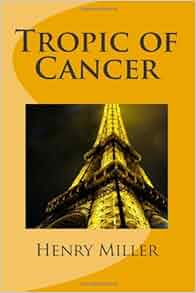


The shabby, 38-year-old American with unblinking camera vision who arrived on the Left Bank of Paris in 1930 was the quintessence of abject failure. Nin memorably recalled that, while her lover was mellow in his speech, there was always a “small, round, hard photographic lens in his blue eyes”.

He and his muse Anaïs Nin flourished here – resolute, isolated and stoical in pursuit of their new aesthetic. Miller, the down-and-out literary enragé, revelled in a new frontier of seedy desperation, where there were “prostitutes like wilted flowers and pissoirs filled with piss-soaked bread”. By the 20th century, however, the renegade frontier was to be found not in the wild west, but in Paris. In American literature, the renegade strand had found its richest expression in the genius Mark Twain, who went out of his way to oppose the “genteel tradition” of Emerson and Longfellow. So it’s good, as we move deeper into the 20th century, to find a writer such as Henry Miller disrupting the still waters of convention with shock and outrage. The more professional novelists became, with audiences to please, the further they moved from their reprobate origins. Writers of all sorts were seen (and saw themselves) as outsiders, renegades and troublemakers, an important theme in the history of the English novel. Daniel Defoe (No 2) was put in the stocks. John Bunyan (No 1 in this series) wrote in prison. W hen the English, later the American, novel began in the late 17th century, it was profoundly associated with transgression.


 0 kommentar(er)
0 kommentar(er)
